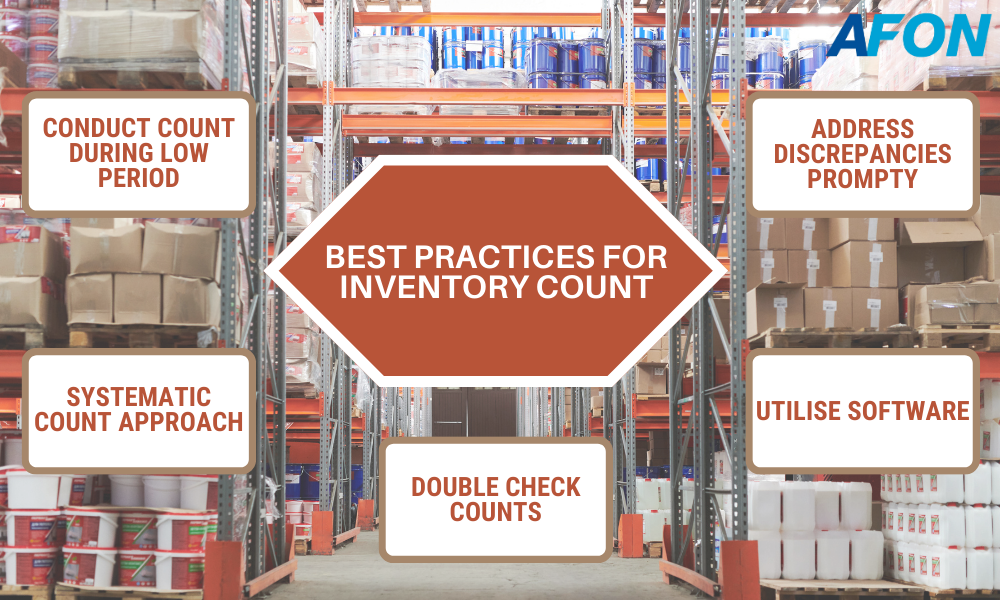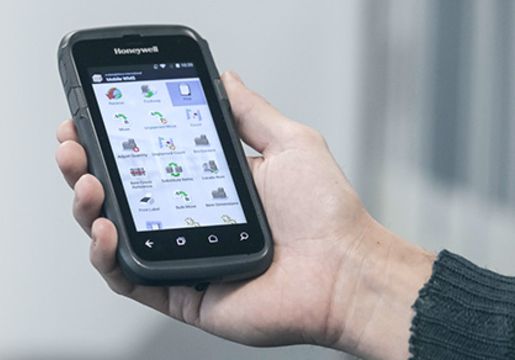The year-end inventory count is a critical process for businesses which deal in physical inventory, especially those in the retail industry. For one, it helps you ensure that your business is stocking sufficient inventory for the holiday season, so that it can avoid stock-out situations during one of the busiest times of the year.
In addition, doing a year-end inventory count helps you can identify any discrepancies in your records, so that you can take corrective action quickly. This not only prevents your business from fraud and theft, but also helps maintain trust with your customers and suppliers.
The year-end inventory count is also required for your business's financial reporting, as it ensures that the value of your inventory is accurately reflected on your balance sheet; essential for both taxation purposes, as well as evaluating the overall financial health of your business.
Last but not least, carrying out the year-end inventory count helps you plan for the upcoming year, make informed purchasing decisions accordingly, and ensures that your business can continue to meet customer demand going into 2024.
Let's take a look at some of the best practices and procedures that you should observe, in order to carry out a successful and effective year-end inventory count in your business.
Prior Preparation For The Inventory Count
%20(1)%20(1).jpg?width=1000&height=666&name=shutterstock_1054595675_1920_compressed%20(3)%20(1)%20(1).jpg)
Properly preparing your business beforehand is key to achieving a successful year-end inventory count. Start by organising your warehouse to ensure that all your items are located where they are supposed to be, and make sure they are properly labeled and categorised. This will make the counting process more efficient and accurate.
Next, review the records stored in the software solution you're using to manage your inventory - whether a standalone inventory management system, or one with inventory management features such as an ERP software.
Reconcile any discrepancies you find between the physical inventory in your warehouse and the records in your system, to identify any potential issues before the actual count so you can address them accordingly.
It's also important to provide those of your employees assigned to carry out the inventory count with clear instructions on how it will be conducted. Assign specific roles and responsibilities to each team member to ensure a smooth and coordinated process. Additionally, consider implementing a schedule to minimise disruptions to your daily operations.
Lastly, gather all the necessary tools and equipment for the inventory count, from manual items such as checklists and two-part inventory tags, to digital tools such as barcode scanners. By having everything prepared in advance, you can avoid unnecessary delays or interruptions during the count.
Best Practices To Observe During The Inventory Count
 5 best practices to observe during inventory count; Source: AFON IT
5 best practices to observe during inventory count; Source: AFON IT
When it comes to executing the year-end inventory count, accuracy and attention to detail are paramount. Follow these best practices to ensure a thorough and precise count:
Conduct The Count During Period Of Low Activity
Doing so will minimise the disruption and distractions that the inventory counting process poses to your day-to-day operations. This is especially important in the retail industry, where the holiday season can be extremely busy. By scheduling the year-end inventory count during a quieter period, you can ensure that your team can focus solely on the count without any interruptions.
Ensure Every Item Is Accounted For With A Systematic Approach
Counting items by location, or by category, will make it easier to identify any discrepancies or errors in your records. This allows you to account for every item, and take immediate corrective action if needed.
Double-check Your Counts To Minimise Errors
Having multiple counters independently count the same items can help you identify any inconsistencies or discrepancies that may have occurred during the initial count. Cross-referencing the counts with your inventory management solution can also help identify any potential errors or discrepancies in your records.
Utilise Software To Optimise The Counting Process
Barcode scanners, RFID tags, or inventory management software can greatly improve accuracy and efficiency during the counting process. Alternatively, an ERP software with robust inventory management features that supports digital counting tools such as barcode scanners is ideal for this purpose.
For example, a cloud ERP software such as Microsoft Dynamics 365 Business Central, integrated with a mobile warehouse app such as Tasklet Factory's Mobile WMS, can ensure a high level of accuracy during your inventory count process.
Optimizing your warehouse with Tasklet Mobile WMS; Source: TaskletFactory
Address Any Discrepancies Immediately
Discrepancies can occur for various reasons, such as theft, inaccurate record-keeping, or errors during the counting process. It is crucial to address these discrepancies promptly to maintain the accuracy of your inventory records.
By investigating the cause of the discrepancy, you can identify any underlying issues and take appropriate action to prevent them from recurring in the future.
By following these guidelines, you can ensure that your year-end inventory count is accurate, efficient, and reliable. These best practices will not only help you maintain accurate inventory records but also enable you to make informed business decisions based on reliable inventory data.
The Importance Of The Post-count Analysis
%20(1)-1.jpg?width=1000&height=666&name=shutterstock_1107781916%20(1)%20(1)-1.jpg)
Once you've completed the year-end inventory count for your business, it's important to conduct a post-count analysis as well. This analysis can help identify any areas for improvement, streamline future inventory counts and enhance overall inventory management practices.
Start by reviewing the accuracy of the count and comparing it to previous counts. Identify any discrepancies and investigate their causes. This can help identify potential issues, such as inaccurate record-keeping or theft.
Next, evaluate how efficiently the count was conducted. Consider the time it took to complete the count, the resources utilised, and any challenges encountered. Identify any bottlenecks or areas where the process can be optimized.
Additionally, gather feedback from the team members involved in the count. Ask for their input on the strengths and weaknesses of the process and any suggestions for improvement.
Based on the findings from the post-count analysis, implement necessary changes to your year-end inventory count procedures. This may include additional training for your employees, or implementing new solutions - such as an ERP software like Business Central, and/or a WMS solution like Mobile WMS.
The Year-end Inventory Count Is Key To Your Business Success In The Coming Year
%20(1)-1.jpg?width=1000&height=666&name=shutterstock_396462703_1920_compressed%20(1)%20(1)-1.jpg)
In conclusion, the year-end inventory count is a crucial process for businesses, particularly in the retail industry, as it helps ensure sufficient stock for the holiday season, maintains trust with customers and suppliers, and accurately reflects inventory value for financial reporting.
By following best practices such as proper preparation, conducting the count during a period of low activity, utilizing systematic approaches and digital tools, and addressing discrepancies promptly, businesses can achieve an accurate and efficient inventory count.
Additionally, conducting a post-count analysis allows for improvements in future counts and overall inventory management practices. To optimise this process, consider implementing an ERP software such as Microsoft Dynamics 365 Business Central, as well as a WMS solution such as Tasklet Factory's Mobile WMS.
By prioritising the year-end inventory count and implementing these strategies, businesses can make informed decisions and meet customer demands in the coming year.
To find out more about how you can make use of Business Central and Tasklet Factory's Mobile WMS to further optimise your inventory management, you can drop us a note here.
Alternatively, take a look at how Q Industries resolved their issues with Business Central and Mobile WMS by clicking on the image below.




